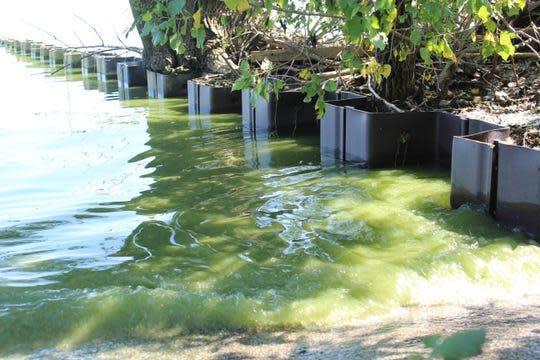Opinion: Fighting horrors of harmful algal blooms should be Mike DeWine's priority
- Oops!Something went wrong.Please try again later.

George A. Elmaraghy served as chief of the surface water division of the Ohio Environmental Protection Agency. He is a commissioner for the Ohio River Valley Water Sanitation Commission and a member of the International Joint Commission Water Quality Board.
Gov. Mike DeWine is to be congratulated that he successfully dealt with major issues that faced our state during his first term.
He inspiringly managed the COVID pandemic, brought massive investment and high technology jobs to Ohio and diplomatically cajoled the Ohio General Assembly to support most of his goals.
As he enters his second term, DeWine’s choice of priorities will cement his legacy.

One area that deserves the governor’s attention is our environment.
In his first term, DeWine reversed John Kasich’s administration hostile attitude towards the environment and restored the balance between environmental protection and economic development, and he initiated the H2Ohio fund to restore and protect Ohio’s waters.
More:Does Ohio have a poop problem? Debate over fertilizer continues two years into H2Ohio initiative
Despite of these accomplishments, the Governor’s second term will be full of environmental challenges. Dealing with the persistent harmful algal blooms in the Western Lake Erie Basin and other Ohio’s water bodies. Ohio also needs a plan to reduce our greenhouse gas emissions and lessen and mitigate the impacts of climate change.

These are issues that require state-level leadership, and the credibility DeWine brings to the table.
This guest column is available free:Support the exchange of local and state ideas by subscribing to the Columbus Dispatch.
During the last decade, Western Lake Erie Basin and other watersheds in Ohio suffered the horrors of harmful algal blooms.
Note from Opinion Editor Amelia Robinson: What do you think Gov. Mike DeWine's second term priorities should be? Let us know in a letter to the editor of 200 words or less emailed to Letters@Dispatch.com. Include your full name, daytime and phone number for publication consideration.
A lot of effort and resources were invested to deal with this problem.
However, the majority of these efforts were designed to just give the impression that the state was doing something to deal with the issue and to avoid making and implementing the hard decisions that may upset some of the stakeholders.
Opinion:Toxic algae threatening 'the gem of our state. 'Manure plan' desperately needed |Opinion
However, tougher requirements are essential to achieve real progress. Experts agree that nutrients (mainly phosphorus) contaminated run off from agricultural fields that apply animal mature is the primary reason for the harmful algal bloom problem in Western Lake Erie Basin and other watersheds.
Experts in U.S. and Canada agree that a 40% reduction in the phosphorus load to the Western Lake Erie Basin is required to control harmful algal blooms in this basin.
All indications are that we will not meet this target unless we take additional appropriate regulatory measures that are more stringent than the existing federal and state regulations. Those measures may be unpopular with the farm community, but we have been kicking the can down the road for years.

Reducing nutrient loads should be achieved primarily by avoiding contaminating the runoff in first place through reducing the rate of manure and fertilizer application and applying those in a way to minimize contamination of the runoff (under surface application and other appropriate practices).
The Maumee watershed, which is the major source of nutrients to Western Lake Erie Basin, produces more manure than can be utilized safely within the watershed.
The state should not approve any new animal feeding operations in this watershed. In addition, the state should hold all the major animal feeding operations responsible for properly disposing of all the manure they produce.
More:Algae blooms intensified by human activity, possibly climate change
More:Toxic algae blooms should be a concern with Lake Erie fishing, boating, swimming
Soon, new directors will be appointed for the Ohio Environmental Protection Agency and Ohio Department of Agriculture.
This will be an opportunity for DeWine to reset the tone for his second term environmental priorities. I urge the governor to establish the goal of eliminating the harmful algal blooms problem in Western Lake Erie Basin and other watersheds before the end of his second term.
George A. Elmaraghy served as chief of the surface water division of the Ohio Environmental Protection Agency. He is a commissioner for the Ohio River Valley Water Sanitation Commission and a member of the International Joint Commission Water Quality Board.
This article originally appeared on The Columbus Dispatch: What should Mike DeWine do during his second term as Ohio governor?

